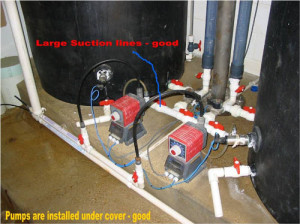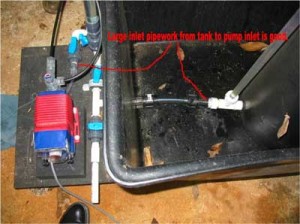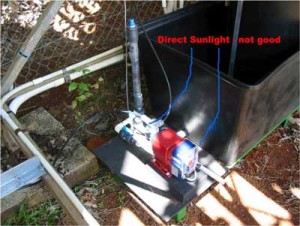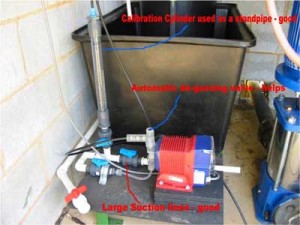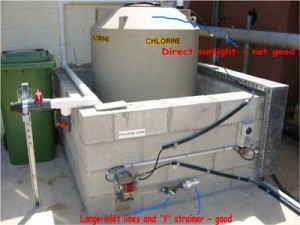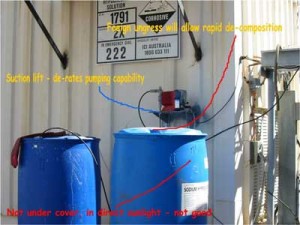Technical Guidelines for Sodium Hypochlorite Metering
Introduction
Often, Sodium Hypochlorite can be difficult to successfully meter into a process for disinfecting purposes due to its chemical composition and tendency to “gas off” during hot ambient temperatures in particular, the problem being more prevalent in warmer climates…………..Why?
What is a Sodium Hypochlorite solution?
Sodium Hypochlorite solution consists of the elements Sodium Hypochlorite (NaClO) 10% ,Sodium Hydroxide (NaOH,Caustic Soda) 1%, Sodium Chloride (NaCI) 9%, and water. It is an oxidizing agent
Why do Sodium Hypochlorite solutions “Gas off”?
Sodium Hypochlorite solutions “Gas off” because the Sodium Hypochlorite de-composes in your tank and pipes over time into a salt solution and generates Oxygen in the form of bubbles. The bubbles can accumulate in pump suction lines causing loss of prime.
The de-composition rate is a factor of Hypo concentration and ambient conditions.
The higher the concentration and ambient temperature, the faster it will “Gas off”.
Hypo will de-compose down to a 5% solution then stop!
1ml of active chlorine in solution will produce a quarter gallon of gas!
How do we minimize “ off-gassing” problems with our metering pump installations?
Keep the Hypo Solution cool by installing your tank out of direct sunlight and away from heat sources the best you can.
Consider insulation of the tank, metering pump suction lines or both.
Cool hypo will dramatically reduce metering difficulties
Reduce the concentration if it’s an option.
Install the largest practical pump possible to allow better volumetric efficiency. This will allow accumulated bubbles to be forced through the pump head without the need for complex gas bleeding devices.
How do we install our metering pumps correctly?
Suction pipe work should be inclined downward to the pump slightly to allow oxygen bubbles to evacuate back into the tank and vent to atmosphere.
A vertical “stand pipe” (just before the pump inlet), rising above the level of the tank and protected from foreign ingress can help prevent gas accumulation. Any gas which builds up in the suction pipe is automatically evacuated to atmosphere before reaching the pump inlet. Alternatively, a suitable priming aid can be installed.
Manual or automatic air vent valves should be fitted to the discharge pipe work to aid in priming. Remember: gas bubbles cannot be forced through a spring-loaded dosing or back pressure valve.
A water flushing circuit “Tee’d” into the suction line will aid in flushing out any salt residue in suction lines and pumps.
Treat each Hypo installation individually – location, temperature, piping, levels, dosing rate, discharge pressure all need to be considered case by case.
Summary
- Sodium Hypochlorite solutions naturally decompose and form oxygen bubbles and some salt residue in the tanks and piping causing “Gas off”.
- The higher the ambient temperature – the more difficult Hypo will be to dose.
- The higher the Hypo concentration – the more difficult it will be to dose.
- The smaller the dosing rate – the more difficult Hypo will be to dose.
- The smaller the metering pump – the more difficult Hypo will be to dose.
